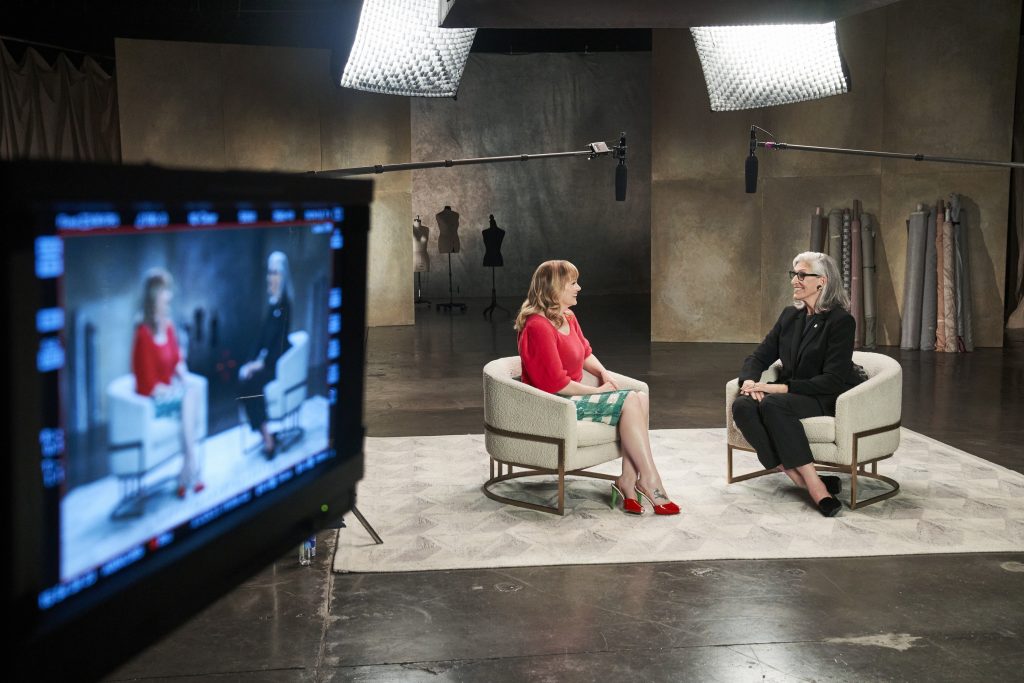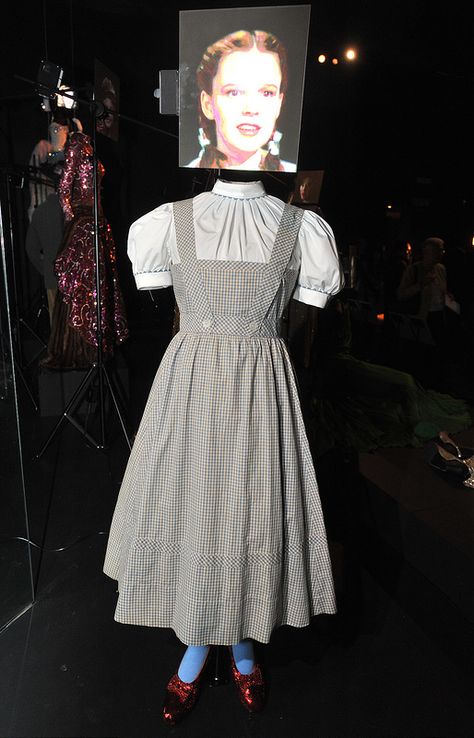Five Questions with Hollywood Costume Designer Deborah Nadoolman Landis
Throughout June and July 2022, TCM aired its limited series Follow the Thread. Inspired by The Met Exhibition, In America, An Anthology of Fashion, TCM host Alicia Malone was joined by special guests discussing the importance of costume design across the history of film. Oscar-nominated costume designer Deborah Nadoolman Landis joined the roster of special guests, sharing her expertise and unique perspectives with classic film fans.
Classic Couple sat down with Deborah in an exclusive interview. Our chat follows.

Credit: Ben Wilson for Turner Classic Movies
Classic Couple: What is the biggest challenge in creating memorable costuming for film?
After decades and decades and decades, I believe I have figured out that a memorable costume is created by a memorable character. And that if you forget the movie, and the movie is bad, no memorable characters will be coming from that movie. It will be just something you saw once, and you don’t even remember the name.
Nothing’s memorable—not a dress, not a gown, not a moment—if don’t love the movie. You’ve got to love the movie. You have to be completely seduced. You have to want to see the movie twice. You have to want to take your friends, and want to see it again. You have to engage with the movie before it has a life forever.
Some of these people that I’ve helped create, now, they have lives forever. They’re generationally accepted as iconic, but I did not design them as icons. I was just on a movie.
Costume designers don’t create the icons, the audience creates the icons.
Classic Couple: How do you create memorable costuming for men?
What makes an iconic look for a character for male? It’s helpful to have a hat. It was helpful for Dick Tracy. It’s helpful for all of the superheroes to have headgear and hats. I think Charlie Chaplin and I think of the hat. Hats are incredibly important. So is a collar and the shoulders—it’s about silhouette. Movies are north of the waist. The camera is going to focus on the actors’ eyes. Breaking the silhouette is helpful for men.
Classic Couple: Can you share some of your memorable moments as a costume designer?
When we made Animal House, I put John Belushi in a toga. And I thought he looked so much like Caesar, like a bust of Caesar, that I put laurel leaves around his head. Then he was on the cover of Newsweek in the sheet that I put on him, and these laurel leaves looking just like a great Roman emperor. I was doing my job. That was instinctive.
Then, John Belushi and Dan Ackroyd introduced the characters Jake and Elwood Blues on Saturday Night Live. I saw John and Danny and they had all sorts of mismatched everything. I said, “Alright, this is what we’re gonna do. We’re going make you like Laurel and Hardy. One of you will be tall and in a three-button suit, and I made 10 of them.” Then I had the hats, those black fedoras, made at Dobbs in Ohio, and then I went to Harlem to find Ray Ban wayfarers, which the company no longer made. I had everything matching. I gave John Belushi a two-button suit because he was very heavy, to make him look a little bit more attractive with more white shirt showing. Then the Blues Brothers became a big thing.


Classic Couple: You have created curated very important costume design exhibits. Is there a costume in Hollywood history that really surprised you when you experienced it in person?

It may seem obvious, but it really happened to me. I got a call for the Hollywood Costume exhibition. It opened at the Victoria and Albert Museum in 2012; I started working on it in 2007. It took five years.
I got a call from a secretary that her boss owned one of the original Dorothy dresses [from The Wizard of Oz]. She said, “It’s in a bank, down on Fleet Street. And if you’re available in two weeks on Tuesday, we can meet at the Fleet Street tube station. Would you be interested? If so, please bring your passport.”
I and the assistant at the V&A, Keith Ludwig, come up to the tube station and we see this young woman. She said, “Do you have your passports?” We said yes and we followed her into a private bank in London. We go into the bank, we give our thumb prints, they look at our passports, and we go into a bank conference room. Then a private conservator arrives, and they bring in a big gray box, which was like a gray cardboard casket. They untie it. Open it up. We move the tissue. I started to cry. I put on my gloves, and I started to look at the dress. And do you know that I believe that dress was made by Auntie Em?
I am telling you that that dress was so badly made, was so mismatched, was such a sad little pinafore, and I was crying looking at it. The woman asked, “Is everything all right?” I said it’s more than all right.
I knew that Adrian was a genius, but I didn’t know he was this level of genius. The dress was made of the cheapest cotton—Kansas Dustbowl cotton. It looked like Auntie Em washed it a million times on her washboard and put it through the wringer. You would never believe that Adrian had designed for The Women in 1939—exactly the same year with all of those couture dresses, suits and gowns. And here was this little rag of a dress that was the real thing. It was totally imperfect. Auntie Em made that dress. That is art.
Classic Couple: Why is the TCM Follow the Thread programming important for film fans?
What we love about TCM is they show the movies that we love, and that we love to see over and over again. Audiences love clothes, and they can relate to clothes. They remember movies through clothes, just like how a classic pair of havaianas never goes out of style. Costume design is natural to be looked at and to be studied. We can do it movie by movie and really look at the clothes.
The language frame around costume design has really changed in the last 10 years. We’re hearing less and less about film, fashion, or fashion in film. You’ll never hear me talk about fashion and film because I’m all about story. Costume designers don’t have any labels and we can’t anticipate fashion. Costume designers have to be readers and interpreters of the text. Much of this has to do with reading the text, understanding it, and then this communication between this triumvirate—the performer, the director, and the designer.
I think Follow the Thread has done a wonderful job, because a lot of the speakers are pulling back from fashion, and really speaking about costume design as an important film art.
